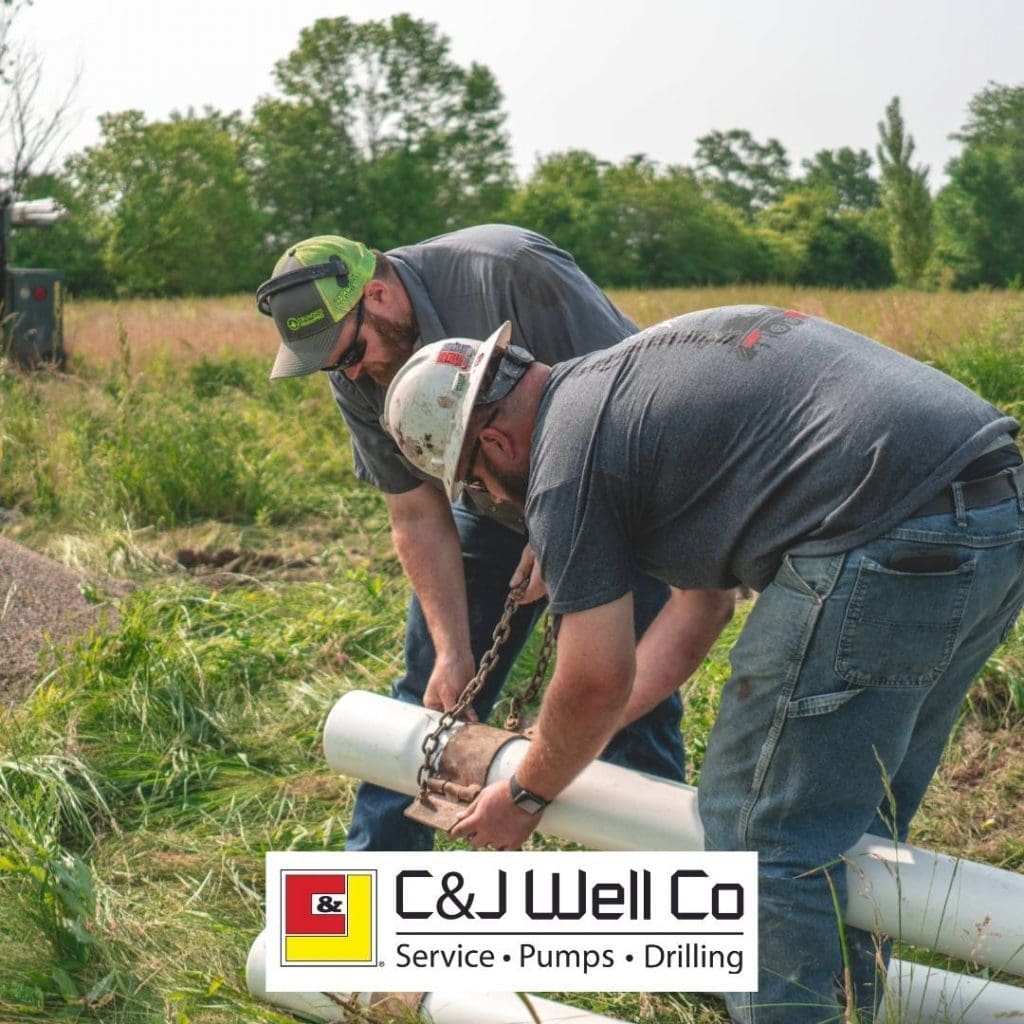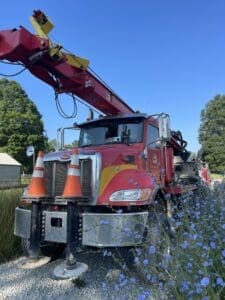A private water well is one of the most reliable ways to supply your home with fresh water. But how long does a well last? The answer depends on factors like how the well was built, the quality of its components, local groundwater conditions, and—most importantly—maintenance. With proper construction and care, wells can last many decades.
Here’s some helpful information about what influences water well lifespan and how to help ensure yours is working for decades to come.
Key Parts of a Water Well
There are multiple parts to a water well. Let’s dive into each one and how you can help ensure they will last.
The Well Screen
The well screen filters out sand, gravel, and sediment as water enters from the aquifer.
- Clogged screens can shorten the life of your well, forcing the pump motor to work harder.
- Steel screens can corrode, and PVC can break more easily.
If a screen becomes blocked by corrosion, sand, or other buildup, it can reduce water flow and quality. A professional well cleanout helps restore performance and protect your well. C&J installs stainless steel well screens, which are built to resist damage and corrosion, lasting longer.
The Well Casing
The well casing is the protective lining that keeps the well stable and allows water to move up the pipe to the pump.
- Older wells might use steel casings, which are prone to rust and failure.
- Modern wells use PVC casing, which doesn’t corrode. Your casing usually won’t wear out in your lifetime if made from high-quality PVC and properly installed.
Pumps, Pressure Tanks, and Other Parts
 A well is more than just a pipe in the ground—it’s a system. Here are some of the system components.
A well is more than just a pipe in the ground—it’s a system. Here are some of the system components.
- Well Pump: The pump moves water from underground to a holding tank. Pumps can wear out over time, especially if undersized or if overworked.
- Pressure Tank: The tank helps maintain even water pressure and reduces pump strain. Older tanks made of steel can rust. Whereas modern composite pressure tanks won’t rust and usually last about 10 years, depending on sediment levels.
- Constant Pressure Systems: These systems are an excellent upgrade for homes with high water demands. They automatically adjust water flow so your home enjoys steady pressure all the time from every tap.
Annual inspections are the best way to catch issues before they cause bigger problems. C&J offers stainless steel submersible pumps for durability with an available lifetime warranty.
Location and Groundwater Conditions
Where your home is located also plays a big role in water well lifespan.
- Solid rock aquifers (like limestone or sandstone) depend on water flowing through fissures or cracks in the rock. The flow of your well is dependent upon the aquifer’s capacity. Some may not produce much water, whereas others may produce a high volume of water.
- Sand and gravel aquifers allow easier water flow and usually support longer-lasting wells.
- Seasonal droughts or heavy rainfall can also affect recovery rates and water supply.
The Indiana DNR has mapped groundwater availability. You can see the different regions and their expected yield here.
Why Maintenance Matters
 Even a “well-built” well using the best materials won’t last without care. Over time, sediment, bacteria, and minerals can build up, making your system less efficient and your water quality poor. Without maintenance, you risk:
Even a “well-built” well using the best materials won’t last without care. Over time, sediment, bacteria, and minerals can build up, making your system less efficient and your water quality poor. Without maintenance, you risk:
- Declining water quality
- Reduced water pressure
- Costly pump and equipment failures
C&J Well Co offers professional yearly inspections, well cleaning, and water testing. Our advanced tools and expertise help restore water quality, extend your well’s life, and give you peace of mind that your family’s water is the best it can be.
Keep Your Well Working for Decades
A properly built and maintained well can supply safe water for a very long time. By scheduling regular testing, cleanouts, and equipment servicing, you can maximize its lifespan and protect your investment.
At C&J Well Co, we help homeowners extend the life of their wells through regular inspections, water testing, pump servicing, and cleanouts. Ready to extend the life of your well? Contact us today.











